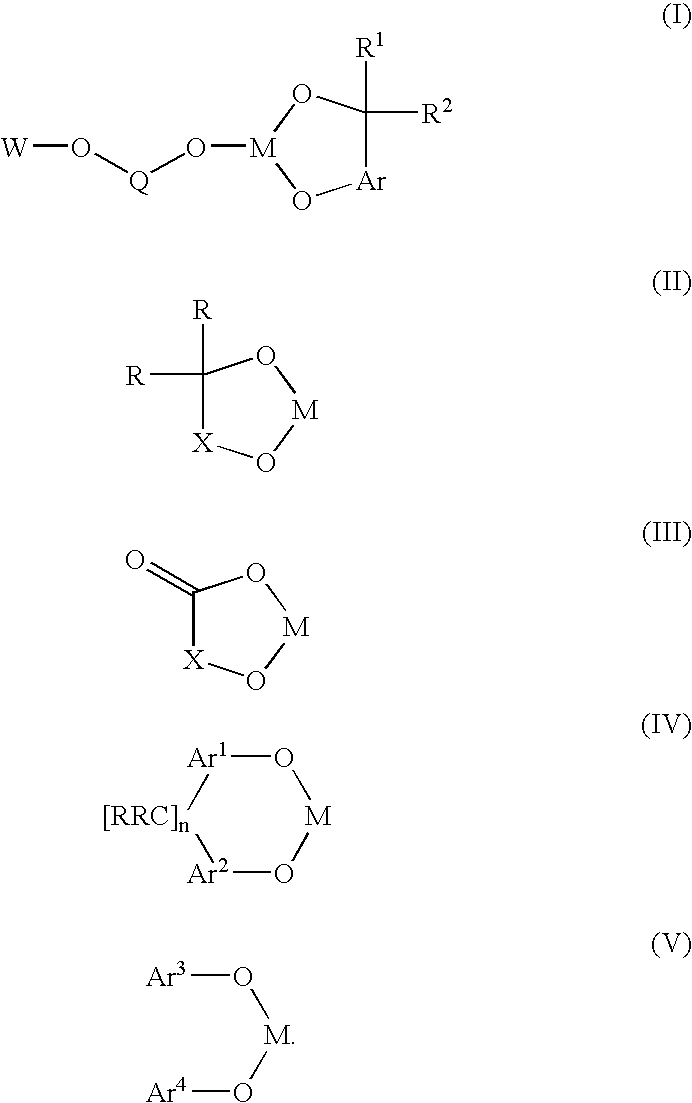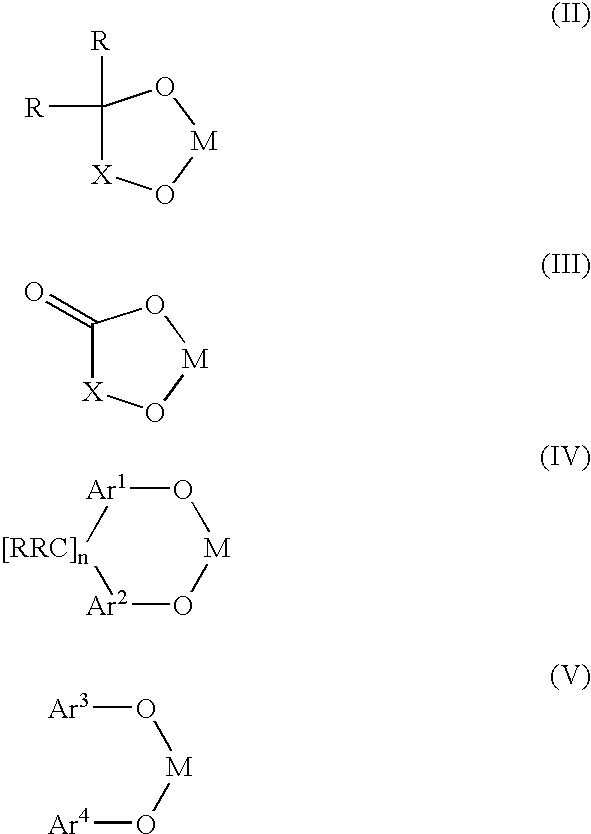Bis-chelating ligand and use thereof in carbonylation processes
a carbonylation process and ligand technology, applied in the direction of organic compound catalysts, physical/chemical process catalysts, chemical compound catalysts/hydrides/coordination complexes, etc., can solve the problem that many of the ligands disclosed in the art cannot be easily fine-tuned to provide high selectivity, and the activity of metal-ligand complex catalysts disclosed in these carbonylation processes is undetectable or insufficient stability, etc. problems, to achieve the effect o
- Summary
- Abstract
- Description
- Claims
- Application Information
AI Technical Summary
Benefits of technology
Problems solved by technology
Method used
Image
Examples
example 1
Synthesis of Ligand A
[0056]The following procedure was used to prepared Ligand A having the formula:
[0057]
At the start, a precursor compound designated “TMS-TMS-PCl2” was prepared having the formula:
[0058]
in accordance with the following procedure.
[0059]To a cold (−30° C.) solution of tetrahydrofuran (20 ml) and 3,3′-bis(trimethylsilyl)-5,5′-di-t-butyl-2,2′-biphenol (TMS-diol, 6.00 g, 13.6 mmol) was added with stirring triethylamine (2.80 g, 27.7 mmol) and phosphorus trichloride (PCl3) (0.933 g, 6.80 mmol). A white precipitate formed immediately, and the slurry was stirred and refluxed for 4 hours. The resulting amine chloride salt was filtered off and washed with tetrahydrofuran. The filtrate was cooled to −30° C. To this cold solution was added PCl3 (1.50 g, 10.9 mmol) and triethylamine (1.4 g, 13.9 mmol) with stirring. A white precipitate formed immediately. The mixture was stirred for 2 hours at room temperature and then filtered to remove the amine salt. The filtrate was evapor...
example 2
Synthesis of Ligand D
[0061]The following procedure was followed to prepare Ligand D having the formula:
[0062]
[0063]At the start, a precursor compound designated “TB-MesTMS-PCl2” was prepared having the formula:
[0064]
in accordance with the following procedure:
[0065]3,3′-Di-t-butyl-1,1′-biphenyl phosphorochloridite (TB-PCl) was prepared according to a procedure described in U.S. Pat. No. 4,748,261. To a cold (−30° C.) solution containing tetrahydrofuran (10.0 ml) and TB-PCl (1.508 g, 4.134 mmol) was added with stirring a cold (−30° C.) solution containing tetrahydrofuran (10.0 ml) and 3,3′-bis(trimethylsilyl)-5,5′-bis(2,4,6-trimethylphenyl)-2,2′-biphenol (MesTMS-diol) (2.344 g, 4.134 mmol) and triethylamine (0.418 g, 4.134 mmol). After stirring the reaction mixture for 1 hour at room temperature, triethylamine (0.6312 g, 6.25 mmol) was added to the reaction mixture. After cooling the mixture to −30° C., PCl3 (0.8521 g, 6.205 mmol) in tetrahydrofuran (5.0 ml) was added. The reaction mi...
example 3
Synthesis of Ligand E
[0067]Ligand E having the following formula was prepared as follows.
[0068]
At the start, a precursor compound designated “o-PhB-TMS-PCl2” was prepared having the formula.
[0069]
To a cold (−30° C.) solution containing tetrahydrofuran (THF) (40 ml), diethyl ether (80 ml), 3,3′-diphenyl-5,5′-di-t-butyl-2,2′-biphenol (2.9093 g, 6.456 mmol), and N,N-dimethylaniline (1.6434 g, 13.561 mmol) was added with stirring a cold (−30° C.) solution containing diethyl ether (10 ml) and PCl3 (0.9312 g, 6.781 mmol). After stirring the mixture for one hour at ambient temperature, an N,N-dimethylaniline hydrochloride salt was filtered and washed with ether. The filtrate was evaporated under vacuum to yield a white solid, which was triturated in acetonitrile (15 ml) for 2 hours, filtered and dried. Yield of 3,3′-diphenyl-5,5′-di-t-butyl-2,2′-biphenyl phosphorochloridite (oPhB-PCl): 2.89 g, 87%. 31P NMR (122 MHz, CDCl3, δ): 176.80 ppm.
[0070]To a cold (−30° C.) solution of tetrahydrofura...
PUM
| Property | Measurement | Unit |
|---|---|---|
| total pressure | aaaaa | aaaaa |
| temperature | aaaaa | aaaaa |
| temperature | aaaaa | aaaaa |
Abstract
Description
Claims
Application Information
 Login to View More
Login to View More - R&D
- Intellectual Property
- Life Sciences
- Materials
- Tech Scout
- Unparalleled Data Quality
- Higher Quality Content
- 60% Fewer Hallucinations
Browse by: Latest US Patents, China's latest patents, Technical Efficacy Thesaurus, Application Domain, Technology Topic, Popular Technical Reports.
© 2025 PatSnap. All rights reserved.Legal|Privacy policy|Modern Slavery Act Transparency Statement|Sitemap|About US| Contact US: help@patsnap.com



